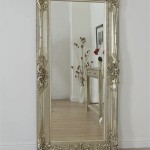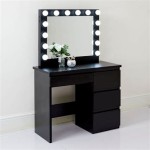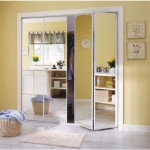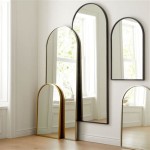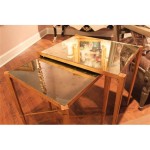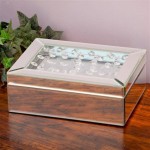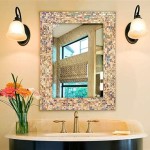Over-Door Mirror Hangers: A Comprehensive Guide
Over-door mirror hangers offer a convenient and space-saving solution for hanging mirrors without the need for drilling or damaging walls. They provide a practical alternative, particularly for renters or those seeking a quick and easy installation process. Understanding the different types, weight capacities, and installation procedures can help individuals choose the right hanger for their specific needs.
Types of Over-Door Mirror Hangers
Several types of over-door mirror hangers are available, each designed with varying features and benefits. The most common types include hooks, straps, and brackets. Hook-style hangers are often the simplest, utilizing a hook that extends over the top edge of the door. Strap-style hangers use adjustable straps that loop over the door, providing a more secure hold for heavier mirrors. Bracket-style hangers offer a more substantial mounting solution, distributing the weight of the mirror more evenly across the door.
Weight Capacity Considerations
Choosing the appropriate over-door mirror hanger requires careful consideration of the mirror's weight and dimensions. Hangers are designed to support specific weight limits, which are typically indicated on the product packaging. Exceeding the weight capacity can result in damage to the mirror, the door, or the hanger itself. It's crucial to select a hanger with a weight capacity that comfortably exceeds the mirror's weight to ensure stability and safety.
Installation and Adjustment
Installing an over-door mirror hanger is generally a straightforward process, requiring minimal tools or expertise. Most hangers are designed for tool-free installation, simply hooking or strapping over the door. Some models may require minor adjustments to ensure a secure fit and prevent the mirror from tilting or shifting. It's important to follow the manufacturer's instructions carefully to ensure proper installation and avoid potential issues.
Door Compatibility and Thickness
Not all doors are compatible with over-door hangers. The thickness of the door plays a significant role in the hanger's effectiveness and stability. Hangers are designed to fit standard door thicknesses, but variations can occur. Checking the hanger's specifications and measuring the door thickness before purchase is essential to ensure compatibility and prevent improper fit. Additionally, certain door designs, such as those with decorative molding or raised panels, may not be suitable for over-door hangers.
Material and Durability
Over-door mirror hangers are typically constructed from metal, plastic, or a combination of both. Metal hangers generally offer greater durability and weight capacity, while plastic hangers can be a more lightweight and cost-effective option for smaller mirrors. Considering the material and construction of the hanger can contribute to its longevity and the stability of the mounted mirror.
Protective Padding and Finish
To prevent scratches or damage to the door's finish, many over-door mirror hangers incorporate protective padding. This padding acts as a buffer between the hanger and the door, minimizing the risk of marks or scuffs. The padding material can vary, with some hangers featuring felt, foam, or rubberized coatings. Choosing a hanger with adequate padding is particularly important for doors with delicate finishes.
Mirror Security and Stability
Ensuring the mirror's secure attachment to the hanger is paramount for safety and preventing accidental falls. Some hangers feature additional security measures, such as clips or straps that secure the mirror to the hanger. These features provide an extra layer of protection and help maintain the mirror's stability, particularly in high-traffic areas or homes with children or pets. Choosing a hanger with these added security features can significantly enhance the mirror's safety and longevity.
Aesthetic Considerations
While functionality is the primary concern, the aesthetics of the hanger should also be considered. Hangers are available in various finishes, including chrome, brushed nickel, and bronze, to complement different bathroom or bedroom decors. Selecting a hanger that blends seamlessly with the surrounding environment can enhance the overall aesthetic appeal of the space.
Alternative Hanging Methods
While over-door mirror hangers offer a practical solution, alternative methods, such as adhesive hooks or traditional wall-mounted brackets, may be more appropriate in certain situations. Adhesive hooks can provide a damage-free option for lighter mirrors on suitable wall surfaces, while wall-mounted brackets offer a more permanent and secure solution for heavier mirrors. Considering these alternatives can ensure the most appropriate hanging method is chosen based on individual needs and circumstances.

Over The Door Hanging Mirrors A Comprehensive Guide

Over The Door Mirror Ideas

Gymax Full Length Over The Door Mirror Hanging Hooks Wall Mount Dressing White Com

Diy Ideas To Replace Over The Door Hooks Mirrors Playbook

Gymax Full Length Over The Door Mirror Hanging Hooks Wall Mount Dressing Black Com

Gymax Full Length Over The Door Mirror Hanging Hooks Wall Mount Dressing White Com

Neutype 55 16 Full Length Over The Door Mirror Hanging For Bedroom Dorm Room White Com

Gymax 13 In W X 47 H Modern Rectangle Wood Full Length Over The Door Mirror Hanging Hooks Wall Mount Dressing Black Gym10444 Home Depot

10 Dual Purpose Mirrors That Will Instantly Open Up Your Small Space Over The Door Mirror Sliding

Over The Door Mirror Rack Pottery Barn Teen

